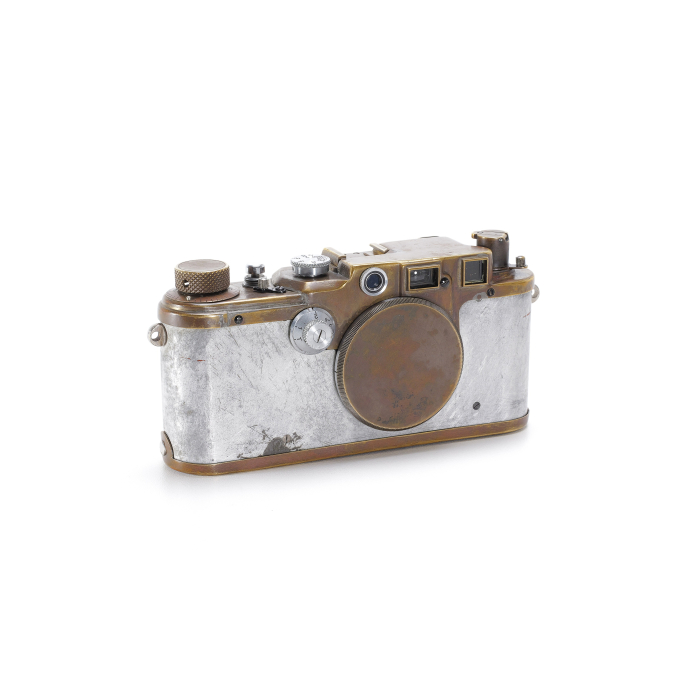First Die-Cast Camera
While Oskar Barnack was still alive, the first ideas for a completely new design of the Leica camera, with a die-cast shutter crate, were being considered. Leitz designer Wilhelm Albert recorded in his diary that work on this new type of camera began in May 1933. The first sample was completed in September 1934. This camera offered here is considered to be the UR-model of all later Leica cameras of this type - both the Leica IIIc introduced 1939 and its successor models, as well as the Leica IV completed in 1936. Extremely striking features of this camera are that it is the first one to have a rear door that opens upwards, as well as a fold-out rewind crank - details that were not introduced commercially until the Leica M3 (1954) and M4 (1967). The camera differs significantly from the later, well-known Leica IIIc prototypes No. 290000 and 335006, particularly the design of the continuous, deep-drawn topplate, which was also first executed on this experimental camera. Also noteworthy is the way the film is transported from cassette to cassette. This camera was in the Leitz (later Leica) factory museum's inventory until 2003 and has been widely published in secondary literature. Leitz Wetzlar Museum inventory number M202. The corresponding inventory sticker is still there. This camera is probably unique. Historically significant!
Provenance: Factory Museum collection; Surat Osathanugrah collection (acquired 2003); Antonio Maresca collection.
Literature: Wilhelm Albert, "Birthdays of the Leitz Photo Constructions from 1927", p. 16; James L. Lager, „Leica, an illustrated History“, Vol. I (cameras), p. 114; Lars Netopil, „Prototype Leica“, p. 224ff. (exactly this camera is illustrated).
| Condition | B |
|---|---|
| Year | 1933/34 |
| Purchase Date | Oct 12, 2024 |
| Price | 506700 |
| Currency | EUR |
| Bought where? | Wetzlar Camera Auctions 6 |
| Collection Owner | BAYLIGHT |
| Invoice | RE000700 |
| Sold | No |

